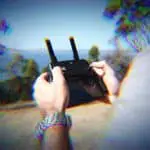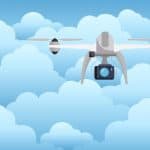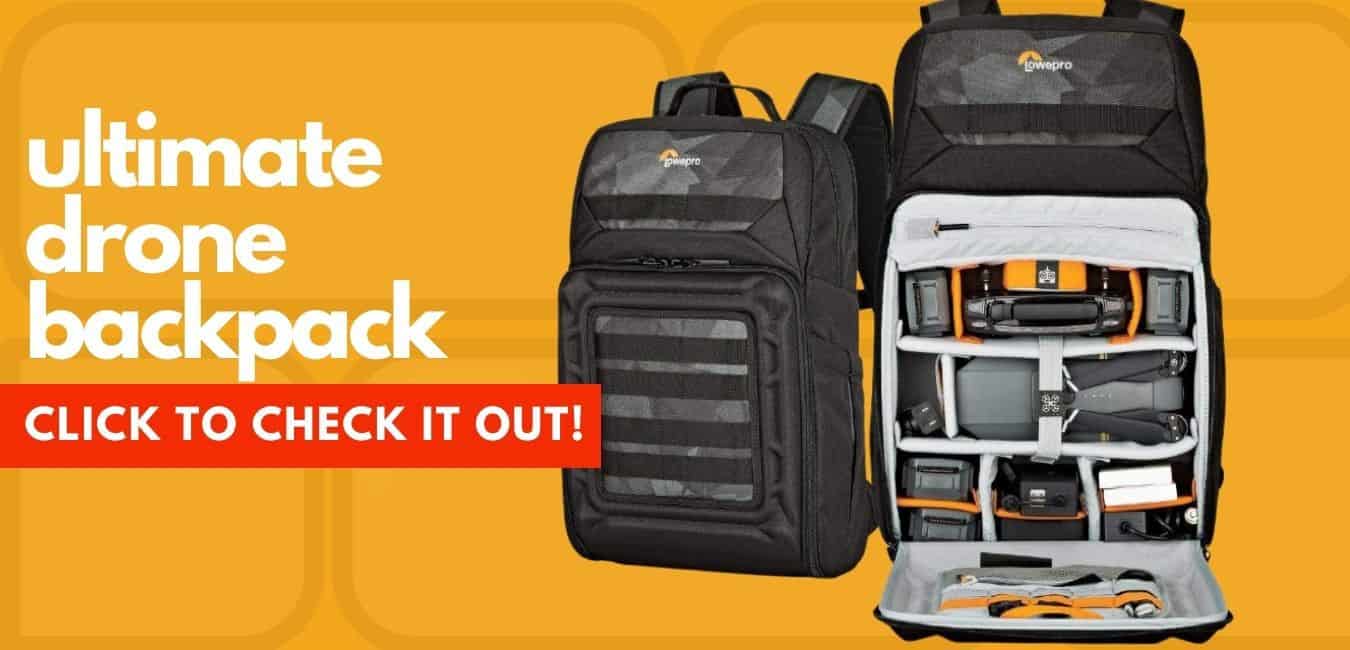Guide to how drones work (and the key technology and components!)
How drones work – As drone technology continues to evolve, it is easy to get caught up with new innovations and technologies, forgetting that regardless of all the advancement, the basic working principle is unchanged. Although it’s important to understand the latest technology and how it could help you, it is equally important to understand the basic working principles.
In this article we cover new technology and also go back to the basics of how drones work, along with the key technology and components to better help you better understand what the important points are for your needs.
Quick Links
What is a Drone?
It’s hard, if not impossible, to understand how something works when you have no idea what it is in the first place. So, what exactly does the word drone mean? Before 1946, the word drone either meant a male bee or a sustained monotonous sound..!..
In the 1930s United States Forces had to figure out how its dog fighters and anti-aircraft gunners would get some experience under their belt without losing half of its fighter planes. Radio-controlled aircraft (RPVs) were the perfect answer. Old biplanes like the Curtis N2C-2 were converted into target drones. They were inexpensive to make, so pilots and gunners could shoot them down all day long without breaking the war chest.
But referring to them as RPVs didn’t quite cut for either the creators or the military users. The acronym just had to give way to something a bit more prosaic. And so they used the word ‘drone’, which is the name of an organism that is known for its mindless, driven existence….I’m talking about drone bees of course!!!!

Today, the name drone is synonymous with unmanned aerial vehicles. With drone technology developing at a blistering pace, unmanned aircraft have now lost the shared trait with their hive-living cousins. With features like automated obstacle avoidance prevalent in consumer level drones, they are anything but mindless flying robots.
Further still, technology that allows a drones access to our brain power is already available, meaning soon, you will control a drone with nothing more than your brainwaves.
Even with all the innovation and new technology, the word drone will always be associated with unmanned aerial vehicles or remotely piloted air systems (RPAS).
UAVs have evolved more than their six-legged namesakes and that’s why you’ll find two species of UAVs. There’s the fixed-wing variant and the rotary wing variant.
Fixed-Wing Drones

Fixed-wing UAVs like the MQ-9 Reaper. That means they have a rigid wing capable of generating lift. In order to fly, fixed-wing UAVs must have an engine to generate thrust that moves the craft along the ground while the greater air pressure generated below the wing generates lift. Of course, there is a lot more to how fixed-wing drones fly, but more of that later.
Rotary Drones

This is the most common type of drone available and you’ve probably seen at least a couple of them. Rotary wing drones feature 2 or more rotor blades that turn on a fixed mast. They come in all sorts of setups ranging from a single rotor blade, like the ones seen on helicopters, to 16 rotor setups. Unlike fixed-wing drones that have airfoil shaped wings, rotary drones have airfoil shaped rotor blades which generate lift as their blades rotate through the air.
What Makes Drones Fly?
How are drones able to defy gravity? Do they have special levitation powers? Let’s find out by taking a peek under the hood and checking out common parts found on fixed wing and rotary drones.
Standard Propeller/Engine
Most drones are fitted with a propeller. But you also find large military grade drones fitted with turbofan engines like the one fitted on the RQ-4 Global Hawk military drone for increased range and speed. If you want a drone with a long range, and don’t have over $100 million for an RQ4, then read our article on long range drones.
Propellers and engines give drones forward movement capabilities. In fixed-wing drones, the propeller provides forward propulsion, allowing the wing to generate lift. On rotary-winged crafts like quadcopters, propellers provide lift as well as steering capabilities by generating downward and lateral forces.
Propellers come in many variations depending on their size and construction material. Smaller drones have plastic propellers and more expensive and larger drones have carbon fiber propellers.
Landing Gear

To land safely, a drone needs a landing gear. Most drones come equipped with helicopter-style landing gear, and you will probably be familiar with the iconic Phantom drone series that features such a landing gear. Drones that require high ground clearance while landing (on rough or unusual terrain) must have modified landing gears to land safely. Also, delivery UAVs need customized landing gear due to the space needed to hold cargo and packages while it makes contact with the ground.
Sometimes, ‘helicopter-style’ landing gear could potentially impede the view on drones equipped with 360 degree cameras, so it’s worth checking that any prospective model has retractable gear, or a camera that moves clear of the landing gear during flight.
Not all drones require a landing gear though. Smaller, lightweight drones can safely land on their bellies, although they have to be very light to avoid potential damage.
Brushless Motors
Brushless motors are ubiquitous in commercial drones. These electric motors are more efficient in performance and operation compared to their brushed counterparts.
Brushless motors have a rotor and a stator. The stator is the main unit that hosts the rotor. It has a network of radial electromagnets that alternate between power on and power off states. This creates a temporary magnetic field when current is applied through the motor’s windings. The interaction between the temporary magnetic field and the permanent magnets in the motor results in attractive and repulsive forces that then spin the shaft of the rotor.
Make sure you get the right motor size, especially if you’re doing a DIY drone build. The wrong motor size either causes the drone to be underpowered or overpowered. Both outcomes ultimately create undesirable flight conditions. You also want to grab the newer brushless motors, if possible, because they offer more efficient performance without being power-hungry. With these types of motors, you get increased range per battery charge and they are relatively quiet.
Electronic Speed Controllers
Without an electronic speed controller (ESC), controlling a drone’s speed and direction is impossible. An ESC is an electronic circuit that monitors and varies the flight speed of a drone. It also controls the direction of flight and its braking. In commercial drones, the ESC also converts DC battery power to AC power to power the brushless motors which drive the propellers.
Flight Controller

The flight controller is a drone’s central control chip, or ‘brain’. It executes all commands received from the pilot by interpreting signals coming from the receiver, the GPS module, and other onboard sensors. It also monitors the health of the battery, regulates motor speeds and direction by relaying commands to the ESC unit.
Receiver
The receiver allows drones to receive radio signals that are then forwarded to the controller. Typical drone receivers have a minimum of 4 channels, but it is always recommended to go for more. There are tons of receivers in the market, and most of them are sufficient for DIY projects.
Transmitter

Drones are often, but not always, supplied with transmitters that send radio signals from the operator to the drone during flight. Similar to the receiver, transmitters need a minimum of 4 channels for the flight controls and gimbal, but it is always recommended to go for a unit with more. The transmitter and the receiver must be on the same channel to communicate during flight. There are tons of manufacturers offering transmitter units, so you might want to do your homework before settling for one.
GPS Module
Without a GPS module, it would be impossible for drones to navigate over long distances. The operator would need a clear line of sight throughout the drone’s flight to avoid accidents or losing the aircraft. The GPS module on a UAV works pretty much like GPS navigation units found in cars. You give it directions and it plots the way with a little help from GPS satellites. The GPS module also helps a drone home safely even when First Person View (FPV) navigation is unavailable. Modern drones also use their GPS units to track down their operators when they lose connection.
Another big benefit of GPS in drones is increased stability. Drones equipped with GPS are able to hold their position very well, and do not drift.
Battery
The battery powers every onboard component on the drone. Without the battery, everything from the motors to the onboard sensors would not function. It is absolutely vital to choose a battery which can sustain a long enough flight time for your needs. This applies both when buying a new drone, or when building your own. Big drones require more power than smaller ones in most cases, mainly due to the increase in weight. There’s a battery monitor on the flight controller that lets the operator know the battery status.
There are three main types of batteries found in drones:
Nickel Metal Hydride (NiMH)
Nickel Cadmium (NiCd)
LiPo (lithium polymer)
LiPo batteries are increasing being found in all kinds of consumer products (e.g. smartphones) due to their increased performance:
Can hold more power
Can transfer power faster
Are lighter
However, there are some drawbacks:
Have a shorter lifespan
Fire risk if punctured
Higher volatility means that they should discharged before longer term storage
Onboard Sensors
You can have all types of sensors on a drone, depending on function. If you want to take temperature readings, there are onboard sensors you can add to a drone. You can even add proximity sensors on a drone to help it navigate around obstacles without human input.
How do drones Drone Fly?
Now that you know the different components that make a drone, how do they work together to help it fly? Time for a physics crash course on the flight dynamics of drones:
Lift Off

Quadcopters have 4 rotors fixed to individual motors allowing them to move at different speeds. Two diagonal rotors follow a clockwise rotation while the other two diagonal rotors spin anti-clockwise. This movement is important because it keeps the quadcopter balanced. If all the motors were to rotate in the same direction, the resulting torque would make the whole craft rotate. The rotors are designed in such a way that they push down air generating lift. When the rotors push down air, the air pushes back on them propelling the drone upwards. The faster the rotors spin, the faster the drone ascends. When they slow down, the drone starts to descend. That’s the basics of how quadcopters work. Easy!
Turning the Drone

When you want your drone to turn, you’ll have to slow down a set of diagonal rotors and at the same time speed up the other set of diagonal rotors. Since the motors next to each are spinning in opposite directions, when you slow down a set of diagonal rotors and speed up the other set, the drone turns to the side with the least speed. While turning, the lift remains constant so that the drone does not change altitude. It does increase its angular momentum during a turn though.
For fixed-wing vehicles, the small wings (!) at the rear, known as horizontal stabilizers, are there to prevent the craft nose from pointing up or down (‘pitching’) too much. Moving them out of their position causes the craft to either pitch up or down.
To make the drone yaw -or rotate around the vertical axis – you need to manipulate the vertical stabilizer located at the tail section of the craft. The vertical stabilizer keeps the nose of fixed-wing drones from moving side to side. When you move the vertical stabilizers correctly, you make the craft rotate the left or right – around the vertical axis.
Going Forward and Backward
When you want your quadcopter to move forward or back, you need to slow down the motors on either the front or back side, while speeding up rotors on the other side. This makes the drone tilt towards the side that the motors are moving slowest, as you have reduced the lift. The reason the drone then moves in the direction of tilt is because some of the lift is now acting horizontally, whereas when the drone is hovering, all lift is acting downwards. This horizontal lift component then pushes the drone in the direction of tilt. The slower the motors are rotating on one side, relative to motors on the other side, the greater the tilt. The greater the tilt, the greater the horizontal lift component and the faster you travel.
Connecting the Operator to the Drone
To control the rotor speeds so that the quadcopter moves as desired, you need a way of communicating with the drone. Most of the time, all you need is a joystick with a wireless transmitter. The transmitter works by alternating the voltage delivered to the motors from the internal battery. When a motor gets more voltage, it rotates faster. When the voltage goes down, it slows down. You regulate the voltage a set of motor receives by simply moving the controls on the transmitter.
Drone Technologies and Features
Drones can do all sorts of things. They are even more maneuverable and flexible than their larger cousins – helicopters and fixed-wing aircraft. But which features make drones so popular today? What sort of technologies are manufacturers melding with drones? Let’s take a quick look at some of the features and technologies present today:
Drones are Autonomous
The GPS module, together with the flight controller, give drones the ability to go about their business without additional input from the operator. Once you’ve programmed a UAV to fly to a particular flight path, sit back and capture the footage you want without worrying about piloting. The GPS module helps the drone arrive at its destination and go back to the point of origin. The flight controller unit makes sure that the drone carries out its orders without fail.
Drone cameras are excellent quality

DSLR quality stills are now possible with some drones, which is amazing in and of itself. The thought of having a flying DSLR camera a few years ago would have been unimaginable. Drone camera technology has also come along way in terms of video capture too. High resolution footage from 4K cameras is commonplace, but it’s really stabilization technology where the game has moved on. 3-axis gimbals enable buttery smooth stabilized footage that was the domain of expensive and bulky cinema grade Steadicam mounts before. To learn more, read our article on camera drones.
Drones can carry stuff
Yes, drones can carry (and utilize) various payloads. Common payloads include:
Larger, high spec. Video cameras for filmmaking
Thermal imaging sensors and camera
Chemical sensors – detect hazardous environments
Normalized difference vegetation index (NDVI) sensors – sense for live green vegetation
Surveying and measurement sensors – distance and volumetric measurement
Drones are fast
FPV (First Person View) camera technology and advancements in lightweight drone design means that they are great for racing. FPV racing is popular and exhilarating:
Drones are safe
Many drones take advantage of advancements in technology in the safety department too.
Mid-to-high-level consumer drones often feature collision detection sensors to prevent unwanted crashes into humans or property! The Phantom 4 Pro, for example, features obstacle avoidance sensors on all sides, so whether you are flying, or whether it’s flying on autopilot to a waypoint, it will automatically avoid collisions in all directions!
Another great feature with safety benefits is return-to-home. This technology is now cropping up in lower priced consumer drones and will automatically take over and fly your drone back to a designated point whenever you press a button, you lose signal, or the battery level gets towards a point where it is insufficient to fly all the way back.
In the near future….
Corporations like Google and Facebook are already looking at drones as a potential avenue for bringing their services to the remotest places in the universe. Facebook is reportedly testing its solar-powered drones to see their viability in beaming internet connection to remote locations. Facebook’s project HAPS (High Altitude Pseudo Satellite) promises the development of solar-powered drones capable of flying for months at a time.
Amazon is also experimenting with a drone delivery network that will ensure customers on the platform get goods delivered right to their doorstep in the most convenient way.

Final words
Drone technology has evolved over the last couple of decades, and they are no longer reserved for the military and intelligence agencies. Almost anyone can get a drone today, and with ever-improving technology becoming available at ever decreasing prices, they are offering new capabilities to people with all kinds of needs, whether for business or just for fun.
You need to update yourself with all new innovations and technologies while shopping for a new drone. But once you know how a drone works, and what the key technologies are, choosing the right drone for your needs becomes easier.
We hope that you find this article useful, and if you have any comments or questions then please drop us a line.
Happy flying!







